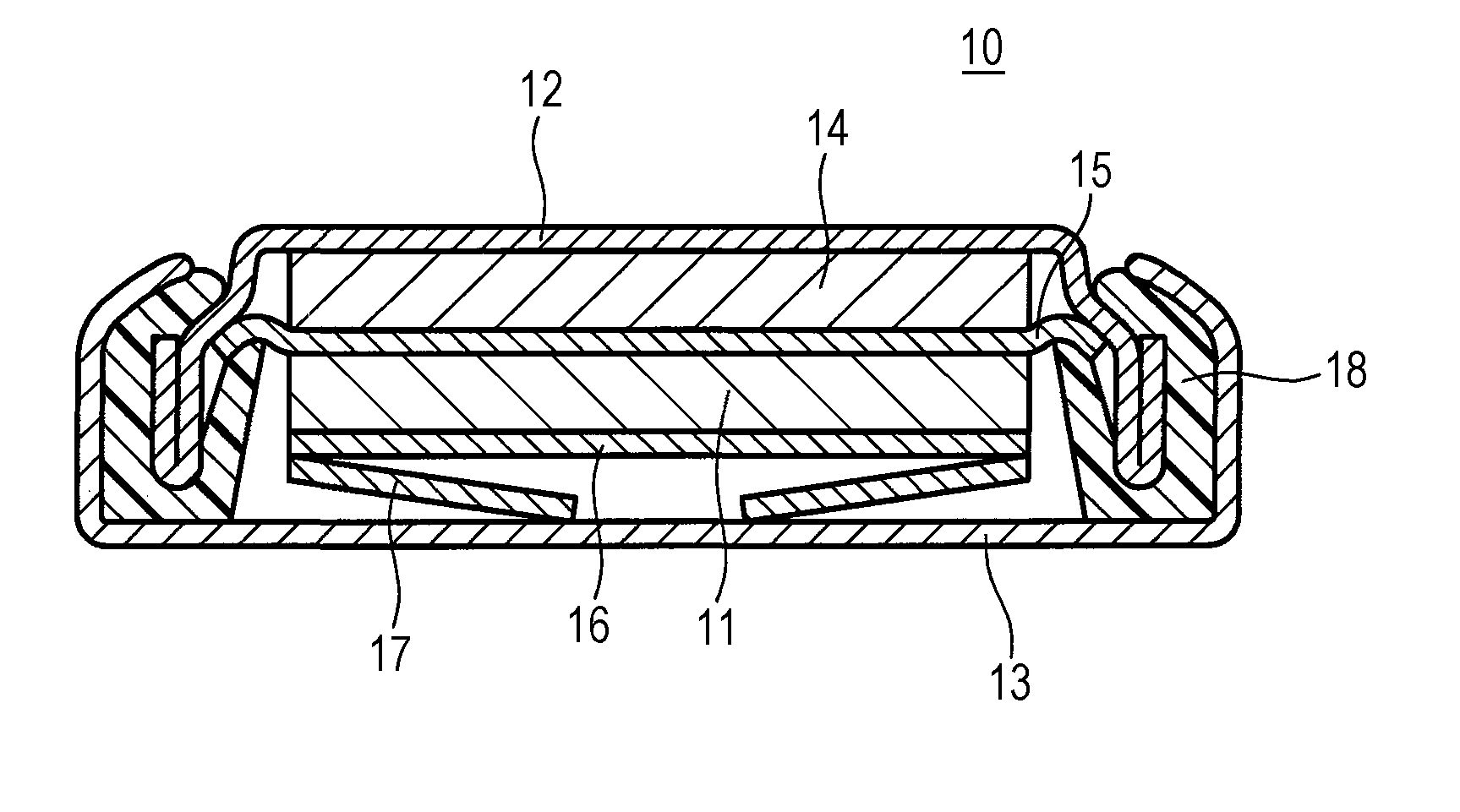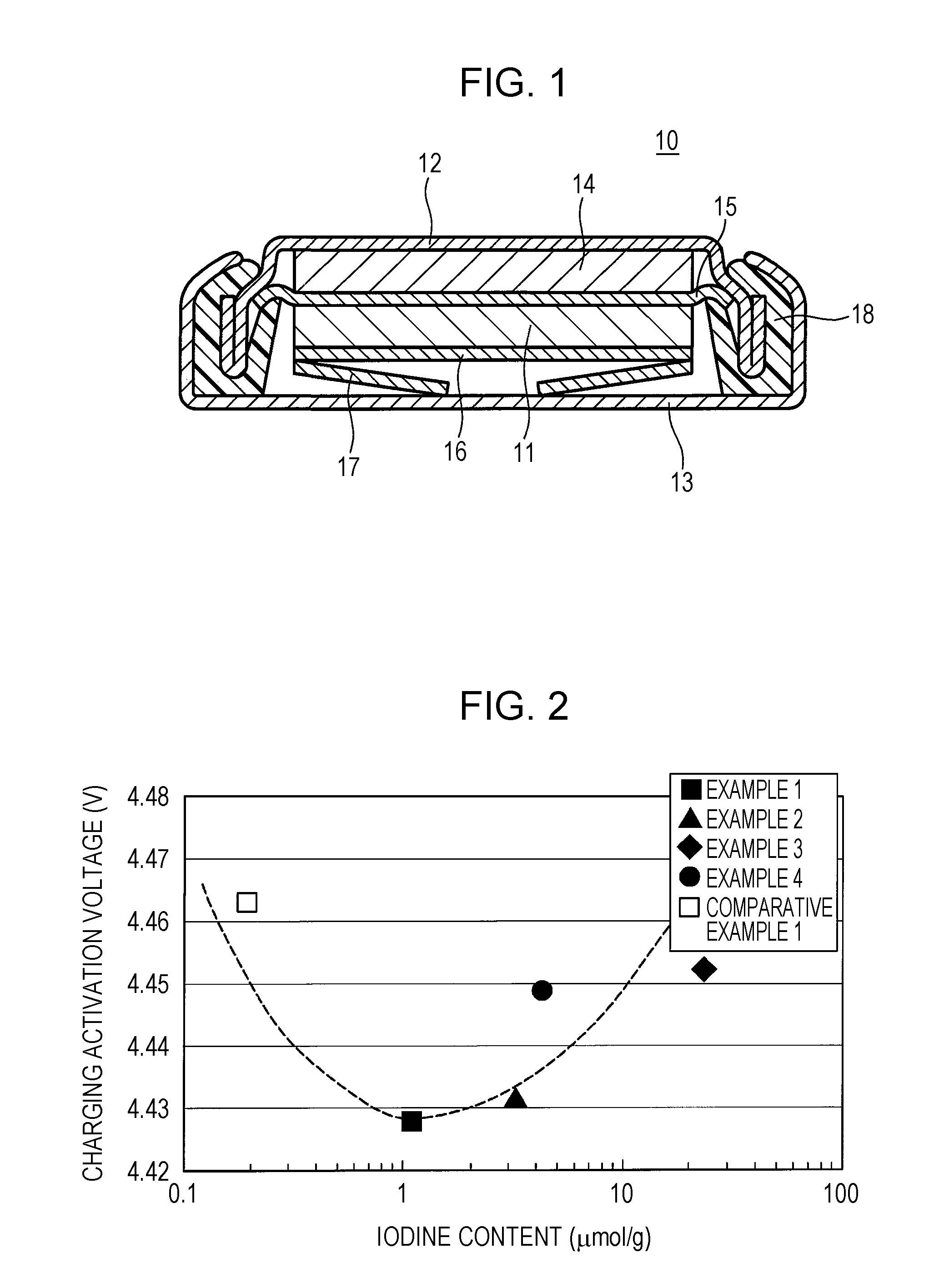Positive-electrode active material for non-aqueous electrolyte secondary battery and non-aqueous electrolyte secondary battery including the same
a technology of positive electrode active materials and secondary batteries, which is applied in the direction of nickel compounds, cell components, sustainable manufacturing/processing, etc., can solve the problems of poor battery performance, and achieve the effect of improving battery performance and lowering the activation voltage for initial charging
- Summary
- Abstract
- Description
- Claims
- Application Information
AI Technical Summary
Benefits of technology
Problems solved by technology
Method used
Image
Examples
example 1
Production of Lithium-Containing Transition Metal Oxide (Positive-Electrode Active Material)
[0070]Nickel sulfate (NiSO4), cobalt sulfate (CoSO4), and manganese sulfate (MnSO4) were mixed in an aqueous solution at a stoichiometric ratio of 0.13:0.13:0.74 and were coprecipitated to yield a precursor (Ni,Co,Mn) (OH)2. The precursor, sodium carbonate (Na2CO3), and lithium hydroxide monohydrate (LiOH.H2O) were mixed at a stoichiometric ratio of 0.85:0.74:0.15. This mixture was held at 900° C. for 10 hours to yield a sodium-containing transition metal oxide having the P2 structure. The main component of the sodium-containing transition metal oxide belongs to the space group P63 / mmc.
[0071]The composition of the sodium-containing transition metal oxide was analyzed with an inductively coupled plasma (ICP) emission spectrophotometric analyzer (Thermo Fisher Scientific, trade name “iCAP6300”). The analysis result was Na:Li:Mn:Co:Ni=0.756:0.145:0.625:0.115:0.115.
[0072]Five equivalents (25 g) o...
example 2
[0081]A coin-type battery 10 was manufactured in the same manner as in Example 1 except that the stirring time in the washing process in the manufacture of the lithium-containing transition metal oxide was 1 minute.
example 3
[0082]A coin-type battery 10 was manufactured in the same manner as in Example 1 except that 0.2 molar equivalent of lithium iodide was added to the product before ion exchange in the manufacture of the lithium-containing transition metal oxide.
PUM
| Property | Measurement | Unit |
|---|---|---|
| charging activation voltage | aaaaa | aaaaa |
| electric potential | aaaaa | aaaaa |
| activation voltage | aaaaa | aaaaa |
Abstract
Description
Claims
Application Information
 Login to View More
Login to View More - R&D
- Intellectual Property
- Life Sciences
- Materials
- Tech Scout
- Unparalleled Data Quality
- Higher Quality Content
- 60% Fewer Hallucinations
Browse by: Latest US Patents, China's latest patents, Technical Efficacy Thesaurus, Application Domain, Technology Topic, Popular Technical Reports.
© 2025 PatSnap. All rights reserved.Legal|Privacy policy|Modern Slavery Act Transparency Statement|Sitemap|About US| Contact US: help@patsnap.com


